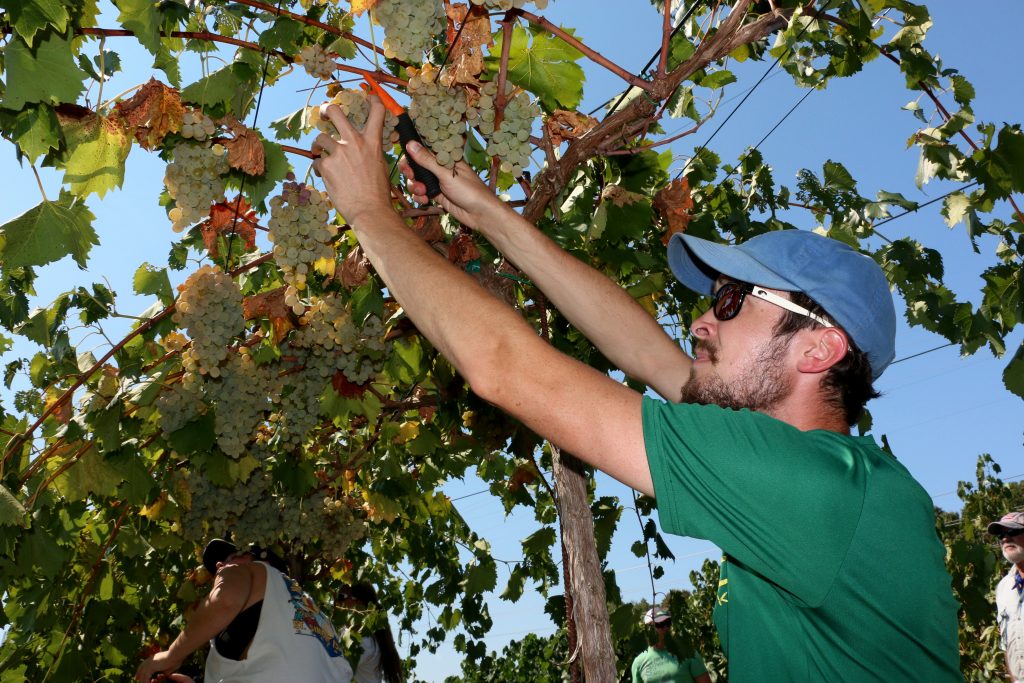
By Clint Thompson
In his latest UGA Extension Viticulture blog, University of Georgia Extension Fruit Disease Specialist Phil Brannen says grape producers will soon be seeing symptoms of Pierce’s disease in susceptible varieties; typically Vitis vinifera and some hybrids.
Mild winter temperatures have contributed to an increase in Pierce’s disease at higher elevations in Georgia and throughout the Southeast. Symptoms normally start to appear in late July or August. Since symptoms are similar to drought or nutrient stress, it’s essential not to remove plants if they’re not suffering from Pierce’s Disease.
N.C. State hosted an effective workshop about Pierce’s Disease that will be helpful for all farmers.
Brannen stresses it is particularly important that you identify and destroy infected vines to prevent further spread of this disease.
The disease is caused by a bacterium that is transmitted by numerous sharpshooter insects, such as the glassy-winged sharpshooter. It clogs the grape xylem, cutting off nutrient and water flow. Once infected with Pierce’s disease, vines die within one to two years.









